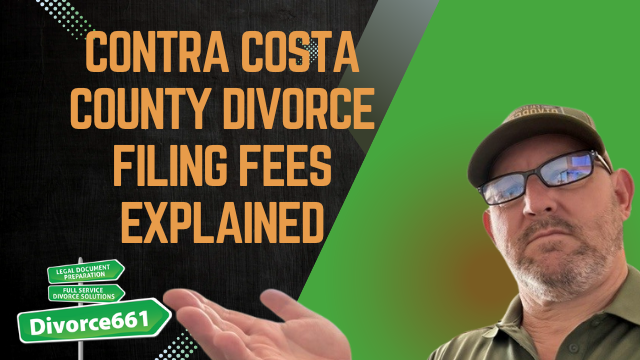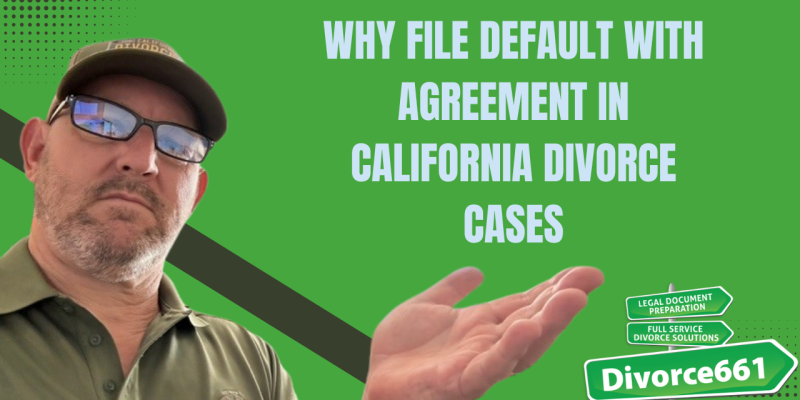Contra Costa County Divorce Filing Fees Explained
Introduction
Hi, I’m Tim Blankenship from Divorce661. In this post I’ll break down exactly what it costs to file for divorce in Contra Costa County, how payments are made, and what to do if you can’t afford the fees. This information comes from my experience guiding clients through the local court process and from a short explainer I recorded for Divorce661.
Quick Overview: What to Expect
The standard filing fee for a divorce in Contra Costa County is $435 per party. If both spouses file separately, the total court fees can reach up to $870. That fee is paid directly to the court and is required to start or respond to a divorce case.
How to Pay Your Court Filing Fees
Payments to the court are straightforward but important to get right. Here are the typical methods:
- Electronic filing (e-filing) through the court’s system.
- Paying in person at the courthouse.
Remember: payments go to the court itself — not through third parties — and must be timely. Delayed or missed payments can stall your case and create unnecessary setbacks.
What If You Can’t Afford the Fee? Fee Waivers Explained
If you have a low income or receive public assistance, you may qualify for a court-approved fee waiver. A fee waiver can cover the filing fee and sometimes related costs such as copies or court reporters.
Typical eligibility factors include your household income, whether you receive benefits like Medi-Cal or CalFresh, and your overall financial situation. The court will review your waiver application and supporting documents to decide.
Common costs a fee waiver can cover
- Filing fees
- Copy charges for court documents
- Costs for court reporters in certain situations
Step-by-Step: Applying for a Fee Waiver
- Obtain the fee waiver forms from the court or online.
- Complete the forms honestly, listing income, expenses, and public benefits.
- Attach required proof (pay stubs, benefits letters, etc.).
- File the waiver paperwork with the court—this can often be done with your initial filing.
- If approved, the court will waive the required fees; if denied, you will be notified and asked to pay or submit additional information.
A Real Client Story
We recently helped a client who was worried about affording the $435 filing fee. By assisting with the fee waiver application and making sure the paperwork was complete and properly filed, the waiver was approved and the client paid nothing in court fees. Their divorce was finalized without the financial burden they feared.
How Divorce661 Helps
At Divorce661 we handle the administrative details so you don’t have to worry about rejections or delays. Our support includes:
- Accurately calculating the court filing fees for your situation.
- Assisting with fee waiver applications when you qualify.
- Preparing and submitting documents via e-filing or in-person filing.
- Checking paperwork to prevent common errors that lead to rejections.
- 100% remote support for Contra Costa County divorces.
Practical Tips to Avoid Delays
- Pay or file for a waiver promptly—timely payments keep your case moving.
- Double-check all forms and attachments before filing to avoid rejections.
- Keep copies of everything you file and any court receipts or orders.
- If you’re unsure about eligibility for a waiver, get help—mistakes can cost time and money.
Next Steps
If you’re considering filing for divorce in Contra Costa County and want help calculating fees, applying for a fee waiver, or completing the filing, visit Divorce661.com to schedule a free consultation. We’ll walk you through the options and help you choose the best path forward.
Conclusion
Filing for divorce in Contra Costa County typically requires a $435 fee per party, but you don’t have to face that cost alone. Fee waivers are available for eligible people, and with the right support—accurate fee calculations, complete paperwork, and timely filing—you can avoid unnecessary delays and expenses. At Divorce661, we make the process clear, manageable, and as affordable as possible.
“We helped a client who couldn’t afford the fees. By applying for a waiver, they paid nothing and successfully finalized their divorce.”







